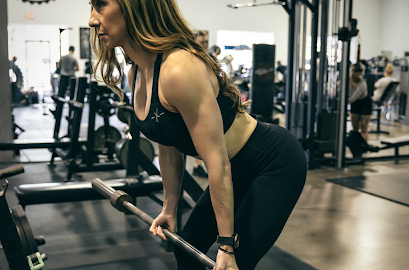

Aside from working out and making dietary changes, using creatine may help bodybuilders to build muscles faster. Creatine is one of the most popular supplements taken by bodybuilders to build muscle and enhance strength and performance. Athletes at all levels (both professional and amateur) strive to enhance their performance using ergogenic aids. The term ‘ergogenic’ originates from the Greek word ergon. Ergon means work. Ergogenics is pharmacological, nutritional, physical, mechanical, or psychological substances and tools that help enhance athletic performance. Creatine is an example of an ergogenic aid. Several reports have shown its potential benefits for athletes and weightlifters. This article will explore and discuss all you need to know about creatine and creatine loading.
What Is Creatine?
If you are looking for a supplement to help you improve your performance at the gym, creatine is the number one supplement you should consider.
Creatine occurs naturally in the muscular cells, where it acts as an energizer, helping the muscles generate the energy needed during weight-lifting or high-intensity exercises. According to a Journal of the International Society of Sports Nutrition report, creatine is the most extensively studied and most effective ergogenic nutritional supplement available for athletes who want to increase their lean body mass and high-intensity exercise capacity.
There are several types (or forms) of creatine supplements sold in the market. They include:
- Creatine monohydrate
- Creatine kre-alkalyn
- Creatine ethyl-ester
- Micronised creatine
Creatine monohydrate is the most common, most heavily researched, and most affordable form.
Creatine has similar properties as amino acids. The body produces it from the amino acids- arginine and glycine. The muscle stores about 95 percent of the body’s creatine as phosphocreatine. The remaining 5 percent can be found in the kidneys, brain, and liver. Despite being produced naturally and obtained from food sources like meat and fish, the body (especially the muscles) still needs more creatine to maximize its potentials.
Using a creatine supplement increases your body’s store of phosphocreatine, which helps the body produce its energy molecule called Adenosine Triphosphate (ATP). ATP is the body’s energy currency which enhances all physical activities. The body’s average creatine stores are about 120 mmol/kg, but taking creatine supplements can increase the stores to about 150 mmol/kg. Other factors that can affect the amount of creatine stored in your body include exercise, meat intake, levels of hormones like testosterone, and muscle mass.
Creatine can enhance athletic performance and overall health in several ways. Generally, creatine offers the following benefits to athletes and bodybuilders:
- Prevents depletion of ATP
- Stimulates protein synthesis and reduces protein degradation, especially in the muscles
- Reduces fatigue after bouts of workouts
- Increases muscular force and power
- Increases muscle mass
- May improve brain health, preventing neurological diseases
Is Creatine Safe?
You might be wondering if creatine is safe to use. Creatine is not only effective but also safe to use. Evidence has shown its safety of usage. Creatine is one of the most tested supplements in the world, with an exceptional safety profile. Leading researchers on the creatine topic have concluded that creatine is one of the safest supplements on the market.
There is a common misconception that creatine causes kidney and liver problems. But, according to scientific research, this is not true. Creatine does slightly increase the level of blood creatinine. Creatinine level is often used as a measure for diagnosing liver or kidney problems. However, no creatinine study has shown that it directly causes harm to either organ.
Creatine has been used to treat and manage various medical conditions such as diabetes, neuromuscular disorders, neurological diseases, concussions, and muscle loss. A study that involved 52 health markers after participants took creatine for 21 months found that creatine has no adverse effects.
What is Creatine Loading?
Have you ever wondered if someone can take too much creatine? How much creatine should be taken? Moreso, does more creatine mean better results?
There are two primary ways to supplement creatine – maintenance dose and creatine loading.
Maintenance dose means taking just the dosage of creatine needed to maintain its average level in the muscles. Maintenance dose usually involves taking 3-5 grams of creatine daily.
On the other hand, creatine loading means taking a higher amount of creatine (than the maintenance dosage) at a shorter duration to supersaturate the muscles. Creatine loading enables bodybuilders to maximize their creatine storage as fast as possible.
How to Creatine Load
The International Society of Sports Nutrition suggests that the most effective way to increase muscle creatine levels is by taking about 5 grams of creatine four times daily for about five to seven days. However, the amount to consume per day could vary depending on weight. To determine the exact dose you should consume daily for your loading phase, multiply your weight in kg by 0.3.
For instance, if you weigh 75kg, multiply 75 by 0.3 to determine your daily dose for the loading phase. This should give you 22.5. This means you would consume 22.5 grams of creatine daily during your loading phase. You can then divide it into three or four doses so you can take it at intervals in a day.
Keep in mind that if you stop taking creatine, your muscle stores will decrease gradually to their usual levels.
When To Take Creatine
Is there a best time to take creatine? Even though creatine has been proven to be safe and effective, the best time to take this supplement has been a subject of debate. Studies show that the best time to take creatine is immediately before or after your workouts. You may decide to take the full dose before or after exercise, or you can split the dose into two. You take the first half before your exercise and the other half right after your exercise.
On your rest days, you supplement only to keep your muscle’s creatine level up. Supplementing on such days seems less important than on your workout days when you need it for enhanced performance and recovery from fatigue. It may not make much difference the time you take your dose on your resting day. However, it may be best to take the supplement with a meal. Research has shown that taking creatine with carbohydrate meals can increase the rate of its accumulation and intake by the cells of the muscles.

Is Creatine Loading Safe?
It doesn’t matter whether you load up creatine over a short time or you spread it across several days or weeks; studies have shown that creatine is safe. According to the International Society of Sports Nutrition, taking up to 30g of creatine per day for five years may be safe, especially for healthy individuals.
However, there are rare cases where gastrointestinal problems like diarrhea and vomiting were reported. Also, since creatine increases water retention in the muscles, it may cause bloating and weight gain. People with health conditions like kidney disease should be wary of creatine loading. Since the kidney metabolizes supplements like creatine, it may disrupt kidney function in people with kidney problems. For people with such health problems, it would be best to consult a doctor first before taking creatine.
Is Creatine Loading Effective?
Creatine loading may not be necessary to boost overall creatine levels. This is because taking lower doses of creatine daily can also maximize your creatine stores. However, creatine loading is quite effective in terms of faster results. While supplementing with a smaller dose of creatine might have the same effect as creatine loading, it will take a longer time to get the outcome you desire. You will have to wait to see beneficial results, which may not be favorable in a situation where you can’t afford to wait patiently.
Suppose you are an athlete and have a competition coming up in a month. You may not have the time to wait for about three weeks for a maintenance dosage to take effect. You may want to opt for the loading phase, which enables you to take enough creatine within days and start seeing muscle gains as quickly as possible. In this way, you don’t get to miss out on some important weeks of training to your full potential.
Research has shown that with creatine loading, you can maximize your muscle stores just within seven days or less. Maximizing your muscle store does not only increase muscle mass and strength but also helps prevent injury.
Conclusion
Creatine supplements are available in most supplement stores, both offline and online. They are also widely used by bodybuilders, sports enthusiasts, and professional athletes to build muscle mass, muscle strength, enhance performance, and accelerate recovery after workout sessions. They are effective and safe to use, as different studies have recommended them to boost muscle creatine stores. However, people with medical conditions should be careful about taking supplements like creatine. It would be best to talk to a doctor and get the right dosage before taking creatine to avoid it interfering with medications or worsening health conditions.






















You must be logged in to post a comment Login